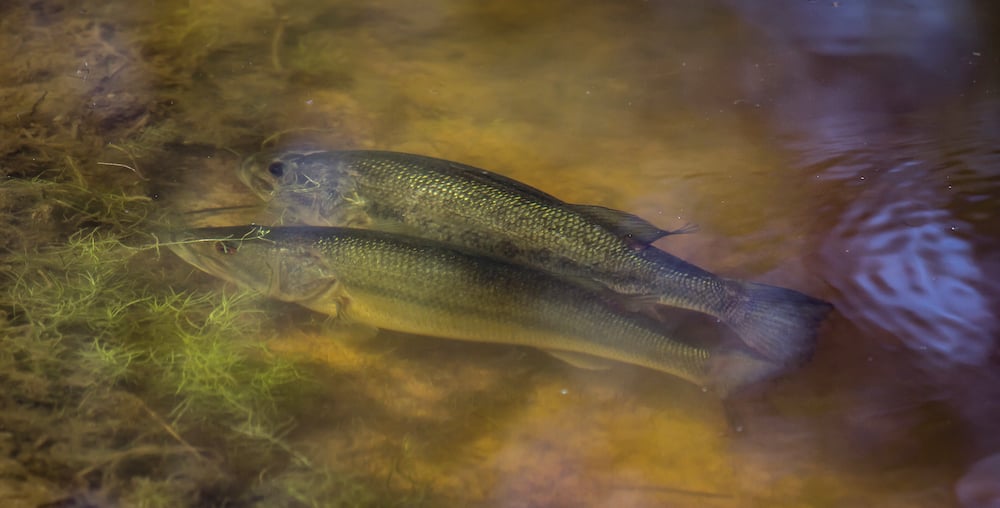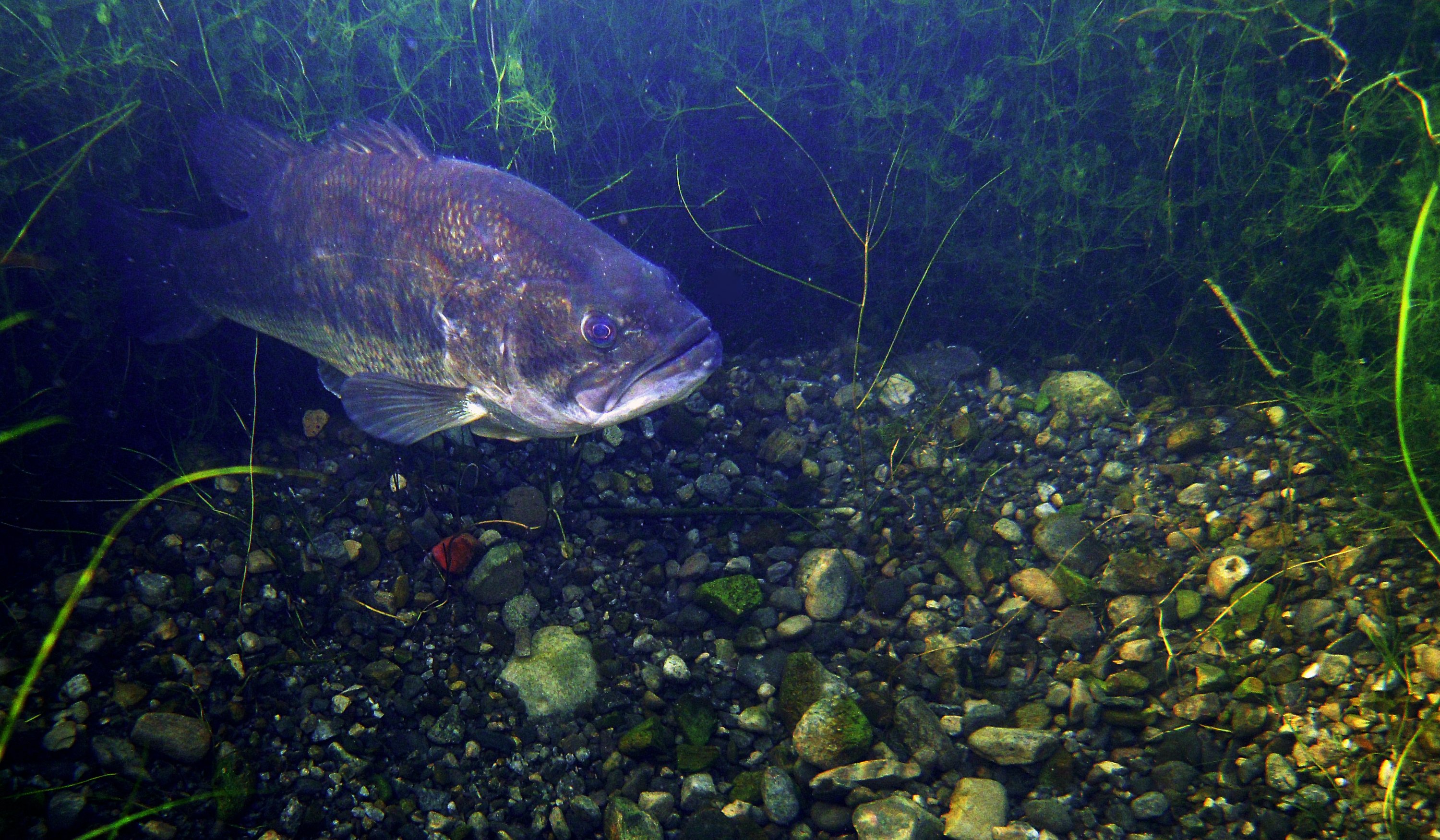Fishing during the spawn can be hugely rewarding but you need to make sure you handle your catch properly to reduce the risk of harming the Bass or impeding their reproduction process.
Spawning Season is a Great Time to Fish, but Should You?
.jpeg?width=595&name=file1%20(1).jpeg)
When Largemouth Bass begin to spawn in the spring, it can be one of the most rewarding times to be a fisherman. Bass start preparing their nests for the spawn when the water temperatures reach around 60 degrees. What makes this such a great time to fish is that you have an elevated chance of catching a trophy-sized bass and the opportunity to catch a lot of fish each time you go out.
But fishing for Bass during the spawning season has always been a controversial topic. While some people believe that there are no consequences to fishing during the spawn, others maintain that fishing during the spawn negatively impacts the fish and should be avoided.
Here, we'll explore the potential pros and cons of fishing for Bass during the spawn for you and the fish.
Bass Spawning Fact or Fiction
Once caught, a bass will stop spawning and not reproduce at all.
This statement is fiction, or at least not always a fact.
More often than not, if you catch a bass when they are off their nest, the fish will go straight back to the nest when you release it. Research shows that if you catch a fish off its nest and take it to a different location and release it, the fish will usually find its way back to that exact location.
Even if the female does not find her way back, she will make a new nest in a different spot and lay her eggs there.
Female Bass lay all their eggs at one time.
This is also untrue.
A female bass will spawn multiple times throughout the spring season with numerous males. She does this to ensure as many of her offspring make it into the gene pool as possible. By enticing several different males to fertilize her eggs, she increases the likelihood the eggs will be adequately fertilized and reduces the dependency of the fry's future fitness on just one male.
With several different genetic lines contributing to the next generation, there is a better chance for "survival of the fittest."
Potential Problems with Fishing During the Spawn
With the basics of bass spawning under our belts, let's look at some of the problems you may cause by fishing during the spawn.
Releasing the Male Bass of a Spawning Pair Increases the Odds of Reproduction
You may disturb the spawning process if there are a male and female on a nest, and you catch the male but don't return it immediately.
In this scenario, the female will often leave the nest to spawn in a different area. A male will guard the eggs and fry until they are big enough to swim away from the nest and seek shelter on their own. If the male gets caught and doesn't return, the female is forced to leave that nest.
She'll make a new nest with another male rather than risk her offspring being eaten or killed by other predators.

Reduce the Stress Placed on Caught Female Bass
While fishing for spawning fish, you must be extra cautious when handling the fish, especially the females.
Females are almost always the larger fish on the nest, so this is the easiest way to tell which fish is the female.
Spawning induces a high amount of stress on the females naturally, and if you do not handle them properly and return them to the water quickly, you can cause an unnecessary amount of added stress. Added stress can cause a female to lay fewer eggs at one time, reduce her fitness and possibly be fatal. You can reduce this particular threat to the spawning fish by handling them correctly and quickly returning them to the water.
Proper Handling of a Caught Bass
When handling the fish, you want to remove the hook as carefully as possible from the fish's mouth. Make sure that all surfaces the fish comes in contact with are wet to prevent its slime coat from getting wiped away.
Another great handling tip is this: when holding your catch for a picture, support the fish's weight underneath its belly with your second hand and be sure you are not extending the fish's jaw at an unnatural angle. Extending the jaw too far can do permanent damage, affecting that fish's ability to feed efficiently.
If you follow these tips and return the fish to the water quickly, you'll inflict minimal stress on the fish.
Reasons for Fishing During the Spawn
Fishing during this period is a great way to help novice anglers or young kids to catch Bass.
During the spawn, Bass become much more aggressive and much easier to catch because they are even more territorial during the spawning process.
The Bass will eat almost anything while they guard their nests and their eggs, so if you can get your lure close to the fish, they will likely bite your hook!
A Few Lures to Help You Catch Spawning Bass
Some great lures to use during the spawn are soft plastic worms, craws, and lizards in natural colors - like green pumpkin or watermelon.
These lures mimic the creatures that are trying to eat the bass eggs and fry. Since the Bass are territorial during this period, they will instinctively eat the bait while protecting their offspring.
Get Eyes on Your Catch Before You Cast!
Another benefit of fishing this time of year is you can see the fish while you are fishing. Bass often make their nests in less than 5 feet of water, so as long as your pond isn't very turbid, you should be able to see the Bass on their nests.
This increased visibility is another excellent way to get beginning anglers or young kids into the sport because it is much easier for them to stay interested when they know there are fish nearby. This will give them confidence that they'll be able to catch some fish during your trip to the pond.
Assess Your Bass Population
Another positive aspect of fishing during the spawn is you'll get to see your bass population. Most of the Bass in your pond will be in 5 feet of water or less during the spawning period. If the water is clear enough, you will see them swimming around the banks, so you'll get a good idea of how many fish you have and their condition just by looking at them.
Keep in mind that you won't see every fish in your pond because they'll spawn at different times throughout the spring, and some will spawn in deeper water where you won't be able to see them.
Take Note of Poor Growth Rates for Your Bass During the Spawn
If you notice that all of your fish are a very similar size or have a high number of fish that look skinny or not as fit as the others, your pond might be experiencing bass crowding, and you should conduct a harvest.
Be Stealthy During the Spawn
While fishing during the spawn, you need to be aware that the Bass can be skittish and easy to spook away. Bass have great eyesight and are excellent at feeling vibrations through the water. If you are being too loud or get too close to the fish, they'll likely sense your presence and swim away.
If you want to have a decent chance of landing a bass during the spawn, be extra cautious, be very quiet, and don't get too close.
As you can see, if you handle your catch properly, there is very little risk of harming Bass or their reproductive process when fishing during the spawn. The Bass will be hyper-focused on mating, laying and fertilizing their eggs, and they will do whatever it takes to make that happen.
This time of year can be an incredible opportunity to catch a lot of fish or catch that one true trophy-class Bass; you just have to be patient and put your lure in the right spot at the right time!
Contact Pond King for Bass Management Plans
As always, if you have any questions, contact our team, give us a call or come by and visit us at our location in Gainesville, Texas. Our fisheries biologists will be happy to answer any questions you may have!
See y’all down at the pond!




